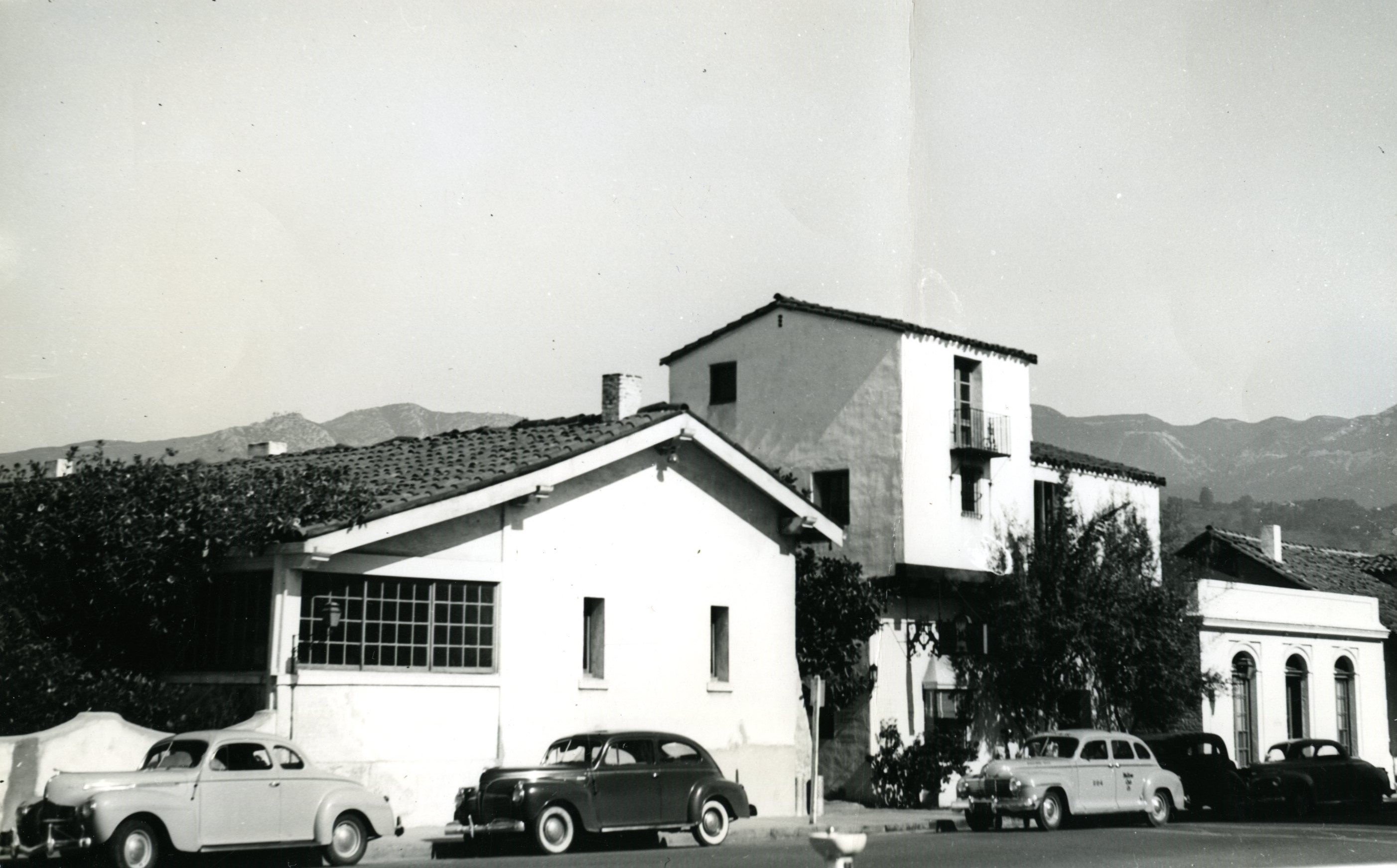
With the arrival of the Spanish colonists, Santa Barbara came to be built with the oldest-known construction material: mud. Santa Barbara’s oldest buildings were made from adobe brick, the word “adobe” deriving from the Spanish adobar, “to plaster.” These early settlers found a landscape largely devoid of trees that could yield lumber suitable for building. An alternative building material had to be found: adobe brick.
The central ingredient in adobe brick is clay-like soil. The physically arduous task of making adobe bricks began by digging a pit into which soil was thrown and water added. Once these materials were blended into a smooth mixture, straw and sand were added, serving to bind and strengthen the adobe. The sand also aided in the even drying of the adobe bricks so they would not warp or curl. Hitting upon the correct proportions of soil, water, straw, and sand was vital; otherwise, the bricks might crumble or be too soft. Trial and error was often necessary until just the right formula was achieved.
The adobe was then poured into wooden forms to create the bricks. Once removed from the forms, the bricks were set aside to dry. Depending on the size of the bricks, which generally averaged anywhere from 50 to 60 pounds, they could take as much as a month to completely dry. Once the bricks had achieved a consistent color throughout, they were ready for use. A surprising number of bricks was needed to build even small structures; a one-room home could take as many as 5,000 bricks.
Water is both a key ingredient and the great enemy of adobe; untreated bricks can dissolve. Construction of a proper foundation was very important, for the foundation not only gave a building a firm base upon which to rest but also protected the adobe walls from groundwater. Each wall had beneath it a trench filled with rounded stones covered with mud.
Adobe walls were thick by modern standards, around two feet for smaller buildings. Two-story adobes were fairly rare. To give the walls greater strength, they were covered with a coating of sand and mud. Window openings were usually small, and these often were fitted with wooden bars or covered with a steer hide or blanket. Glass was virtually unknown. Wooden floors were atypical. Most floors were packed earth with a coating of steer’s blood to make them hard and smooth. New coatings were periodically reapplied.
The next step was construction of the pitched roof. A ridgepole ran the length of the building and was connected to the side walls of the adobe by rafters. Saplings were placed perpendicular to the rafters to create a crosshatch effect. Atop this was placed thatch, and atop that, curved tiles of kiln-fired adobe, laid in an overlapping fashion.
Finally, the adobe walls were sealed with a plaster made of lime, which was produced by firing seashells. The lime was mixed with sand and water, and the mixture applied to the walls with bare hands. As the mixture dried, it would harden, forming a protective coating. This coating tended to flake and so was periodically reapplied. The finished adobe was cool in the summer and warm in winter and proved to be quite durable. Santa Barbara’s historic adobes have survived any number of earthquakes over the decades.
The increasing influx of Americans to Santa Barbara after 1850 caused a decline in the popularity of adobe construction; the newcomers wanted houses that reminded them of home. In some cases, adobes were covered with wood siding, sometimes for aesthetic purposes or as protection from the elements. Construction of Stearns Wharf in 1872 allowed for increased imports of lumber and hastened the arrival of Victorian architecture. Many adobes succumbed to development. For example, the imposition of the grid pattern of streets in the early 1850s led to the razing of any number of adobes.
Yet the architecture of modern-day Santa Barbara, with its white walls and red-tile roofs, very much harks back to the city’s adobe days. Outstanding examples of Santa Barbara’s Spanish Colonial style and its variants include the El Paseo complex, City Hall, The Arlington Theatre, and any number of commercial buildings and private residences that dot the city landscape.
In many ways, Santa Barbara’s adobe days live on, but how many of us know of the toil and trouble it took to construct Santa Barbara way back when?



